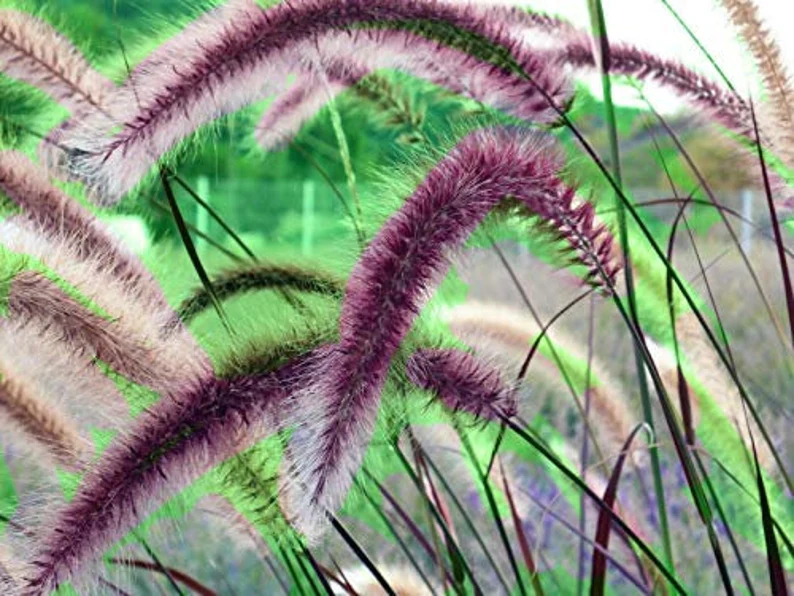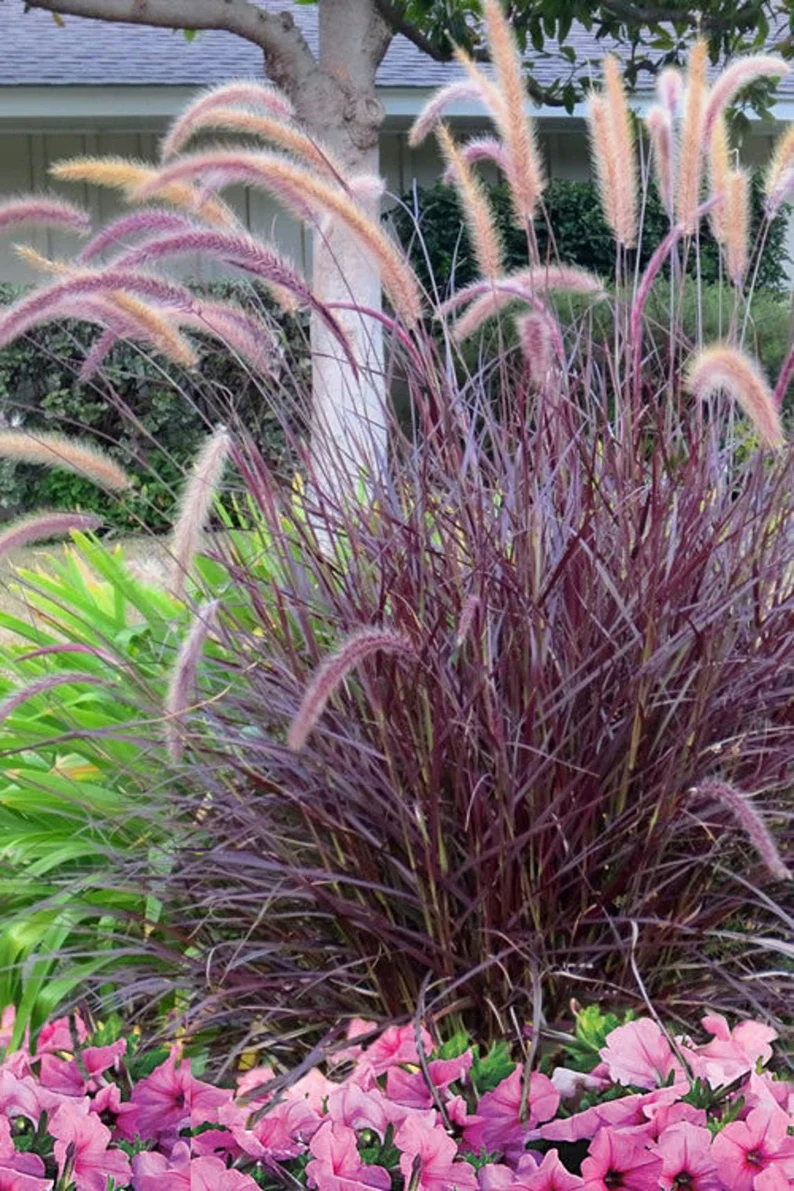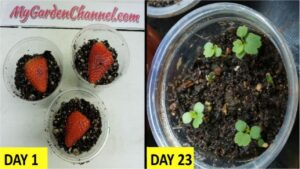What is Purple Fountain Grass?

Purple Fountain Grass (Pennisetum setaceum) is a popular ornamental grass native to Africa. It’s known for its attractive purple or burgundy colored foliage and showy bottlebrush-like spikes of flowers. The grass grows in a clump form and can reach up to 4-6 feet tall and 2-3 feet wide.
This grass is easy to care for and requires minimal maintenance. It can be pruned back in the late winter or early spring to remove any dead foliage. Additionally, it can be fertilized with a balanced fertilizer in the spring to promote growth.
Purple Fountain Grass is a great addition to any garden, providing a striking vertical accent, especially when used in mass plantings. It also attracts birds and butterflies, making it a great choice for wildlife gardens.
Dimensions
Can reach a height of 4-6 feet and a width of 2-3 feet. The size of the plant can vary depending on growing conditions such as soil type, sunlight, and water availability.
In general, Purple Fountain Grass forms a clump of foliage and has a fountain-like appearance, with the leaves cascading down from the top of the plant. The spikes of flowers that form on the plant add even more height, giving the grass a dramatic, showy appearance.
It’s important to note that Purple Fountain Grass can spread quickly and become invasive in some areas. It’s important to check the regulations in your area before planting this grass, and to plant it in a location where it won’t be a problem for the surrounding environment.
Zones
Hardy in USDA hardiness zones 9-11. In these zones, the grass can grow as a perennials and is able to withstand average winter temperatures.
In cooler climates, it can be grown as an annual, which means that it can be planted each year and will die back after the growing season. If grown in a container, Purple Fountain Grass can be brought indoors during the winter in cooler climates and kept as a houseplant.
If you’re not sure which hardiness zone you live in, you can check the USDA Plant Hardiness Zone Map, which provides information on average winter low temperatures for different areas across the United States. This map can help you determine whether Purple Fountain Grass is a suitable choice for your garden based on your local climate.
How to Tend:
Inside
If you’re growing Purple Fountain Grass (Pennisetum setaceum) indoors, here are some tips to help you care for it:
- Light: Place the plant in a bright, sunny location with at least 4 hours of direct sunlight each day.
- Water: Water the plant regularly, keeping the soil evenly moist but not waterlogged. Allow the top inch of soil to dry out before watering again.
- Temperature: Purple Fountain Grass prefers warm temperatures and does best in a room with temperatures between 60-75°F. Avoid placing the plant near cold drafty windows or hot radiators.
- Humidity: Indoor air can be dry, so it’s important to increase humidity levels for the plant. This can be done by placing a humidifier nearby or by placing a tray of water near the plant.
- Soil: Use a well-draining potting mix and make sure the pot has good drainage holes to prevent water from sitting in the bottom of the pot.
- Fertilizer: Feed the plant with a balanced, water-soluble fertilizer every 2-4 weeks during the growing season (spring and summer). Do not fertilize during the winter months.
- Pruning: Prune back the plant in the late winter or early spring to remove any dead foliage. This will also encourage new growth.
By following these guidelines, you can help ensure that your indoor Purple Fountain Grass thrives and stays healthy.
Outside
Purple Fountain Grass (Pennisetum setaceum) is a low-maintenance plant that is easy to care for when grown outdoors. Here are some tips to help you care for it:
- Light: Place the plant in a sunny location with at least 4 hours of direct sunlight each day. Purple Fountain Grass can tolerate some shade, but it will grow best in full sun.
- Water: Once established, Purple Fountain Grass is drought-tolerant and can withstand periods of dryness. However, it is important to water it regularly, especially during prolonged periods of drought, to keep the soil evenly moist.
- Soil: Purple Fountain Grass can grow in a variety of soils, including those that are poorly-drained. It prefers well-drained soils and will not tolerate standing water.
- Fertilizer: Fertilize the plant with a balanced fertilizer in the spring to promote growth. You can also apply a slow-release fertilizer to the soil in the spring.
- Pruning: Prune back the plant in late winter or early spring to remove any dead foliage. This will also encourage new growth.
- Pests and Diseases: Purple Fountain Grass is generally disease and pest-free, but it can be susceptible to scale insects and mealybugs. Regularly inspect the plant for signs of infestation and treat with an insecticidal soap if necessary.
By following these guidelines, you can help ensure that your outdoor Purple Fountain Grass thrives and stays healthy.
Where to Purchase?
You can buy this at our Esty shop. Happy shopping!!


